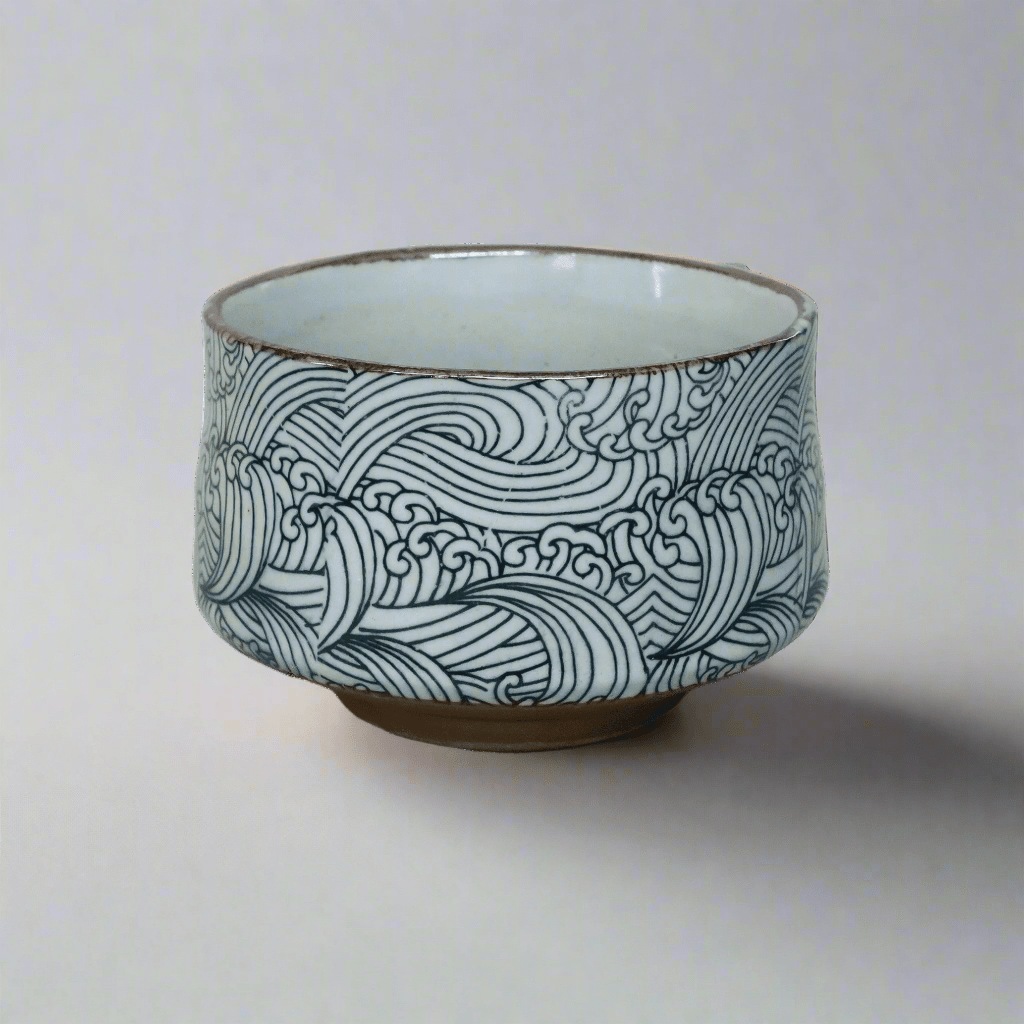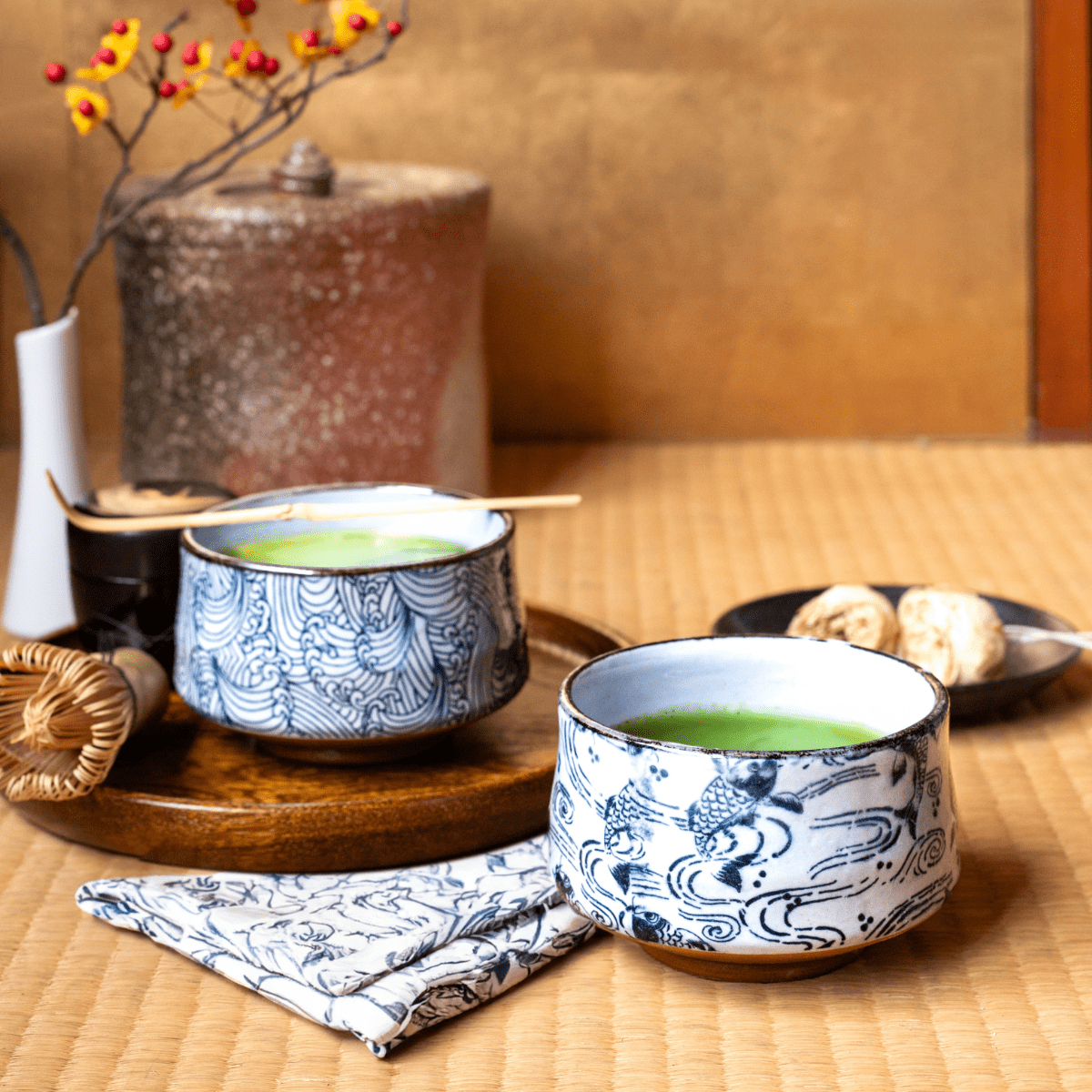



Handmade Matcha Bowl
Fast & Secure Delivery from Japan to your Door [Shipping Policy]
Shop Safely with Encrypted Checkout and Verified Gateways.
Pairs well with

Handmade Matcha Bowl
Handmade excellence, traditional beauty—crafted for everyday appreciation.
This refined matcha bowl, expertly handmade in the historic ceramic region of Seifu, Japan, embodies traditional Japanese craftsmanship paired with exceptional practicality. Crafted using precise slip casting techniques by skilled artisans, each bowl achieves remarkable balance and an impressively lightweight feel, providing both comfort and ease during matcha preparation.
Choose between two beautifully understated patterns, each steeped in Japanese cultural tradition:
- Carp-in-the-Wave: A subtle representation symbolizing determination and harmony.
- Rough Seas: A minimalist pattern inspired by nature's calm yet powerful movement.
Both designs are carefully rendered yet understated enough to complement daily use or special tea ceremonies. The handmade nature ensures that every bowl has slight, unique variations in shape, size, and color, reflecting the true spirit of Japanese pottery craftsmanship, where individuality and authenticity are prized.
The bowl measures 4.5 inches in diameter and 3.1 inches in height, holding up to 19.6 fl oz (580 cc)—perfectly sized to comfortably whisk and enjoy matcha. Weighing 1.43 lbs (650 g), the bowl feels sturdy yet impressively light, thanks to the special crafting methods employed.
Product Information
Care instructions
Maker
Note
FAQs
All you need to know about Japanese Pottery.
What types of traditional pottery are made in Japan?
Japan is home to several renowned pottery styles, including Mino ware (Gifu), Bizen ware (Okayama), Arita and Imari ware (Saga), Shigaraki ware (Shiga), and Mashiko ware (Tochigi). Each region has its own distinct materials, glazes, and firing techniques that reflect local history and aesthetics. Toki City in Gifu Prefecture is particularly renowned as the heart of Mino ware (Minoyaki)—the most widely produced pottery style in Japan.
What materials are used in artisan Japanese pottery?
Most artisan pottery in Japan is made from locally sourced clay, often mixed and refined by hand. Natural minerals and ash are used in glazes, and many pieces are wood-fired or fired in traditional climbing kilns (noborigama), producing unique surface textures and natural variations.
Are artisan Japanese pottery pieces safe for food use?
Yes. Authentic artisan pottery is made with food-safe, lead-free glazes and is carefully fired at high temperatures to ensure durability and safety. However, it's important to follow care instructions, especially for unglazed or porous ceramics.
What makes Japanese pottery different from Western ceramics?
Japanese pottery often emphasizes wabi-sabi—the beauty of imperfection—resulting in organic shapes, subtle asymmetry, and natural glazes. Unlike Western ceramics, which may prioritize uniformity, Japanese pieces often celebrate the individuality of each item, reflecting the artist's hand and the firing process.
How should I care for artisan-made Japanese pottery?
Hand-wash pottery with mild soap and avoid extreme temperature changes (like placing hot items into cold water). Some unglazed pieces may absorb moisture, so allow them to fully dry before storing. Avoid microwaves or dishwashers unless the piece is specifically labeled as safe for such use.
Do I need to season my matcha bowls before using them?
In most cases, seasoning a matcha bowl is not necessary—especially if the bowl is fully glazed, as the glaze naturally seals the surface and makes it ready for use. However, if the bowl is unglazed or has a raw clay base, a simple seasoning process called medome can help prevent cracking or staining. To season, soak the bowl in warm water mixed with a spoonful of cooked rice or flour for about 30–60 minutes, then rinse and let it dry completely. This step helps fill tiny pores in the ceramic and adds durability over time.

